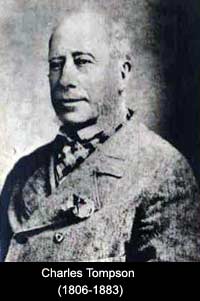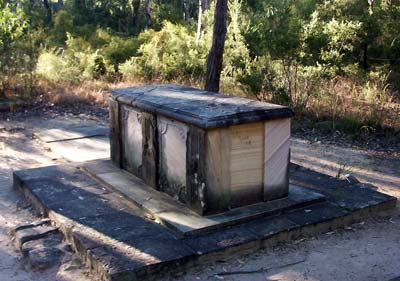Soon after Macquarie’s visit the site of the township was surveyed and blocks allocated. In January 1813, the year the Blue Mountains were finally crossed, William Cox began work on a two storey brick parsonage and outbuildings which took about a year and a half to build. This was almost three times as long as it took him to build the road over the Blue Mountains to Bathurst. He commenced building the mountain road in November the following year.
After the parsonage was completed, the plan was then to build a school house, mostly funded by the settlers. This building would also serve as a temporary church until one could be built. Macquarie saw the establishment of schools and churches as vital to the wellbeing of these new communities. He believed that they “greatly contribute to the Reformation of the Morals of the lower orders of people, and to the implementing religious Principles in the Minds of the rising Generation.” For many of the early settlers, the building of churches and the establishment of cemeteries also subtly offered some continuity and meaning to their very existence. Church dogma and ritual would have given some people a sense of the familiar in this strange country. For others, the sanctity and refuge provided by a church would have been a great comfort against the harsh day-to-day realities of life. A church also provided a meeting place where a sense of community could be fostered.
Macquarie appointed the Irish born Reverend Henry Fulton to the position of parson at Castlereagh and Richmond in July 1814. Fulton was university educated, having studied for his Bachelor of Arts at Trinity College, Dublin. He was an ordained minister with a wife and two children when he was arrested for sedition after the Irish uprising of 1788. He was sentenced to transportation for life and sent on board the Minerva to New South Wales, arriving in January 1800. A sympathetic relative paid for his family to accompany him. That same year he was granted a conditional pardon. In 1805 he received a full pardon after ministering to the people on Norfolk Island for five years. On his return to Sydney he became Acting Chaplain while Reverend Samuel Marsden was in England. Fulton, a loyal supporter of Bligh, was dining with the Governor on the night that Major George Johnston, commander of the NSW Corps and lieutenant-governor of the colony, arrested Bligh in 1808. He immediately lost his Acting Chaplain position. When Governor Macquarie arrived in 1810, Fulton was reinstated. He returned to England to give evidence at Johnston’s trial, arriving back in the colony in 1812.

Once appointed to the parsonage at Castlereagh, Fulton set up a school, believed to be the first secondary school in the colony.
In 1826 one of Fulton’s former pupils, Charles Tompson, published a book of poetry entitled “Wild Notes from the Lyre of a Native Minstrel”. Tompson, whose father had been a convict, was born in Sydney in 1806. He dedicated his book to Fulton. In his first poem “Retrospect” he acknowledged with gratitude the debt he owed his former “tutor of (his) early hour”. He reflected on the happy times he had at Castlereagh and shared his feelings for the place, its beauty and “rural stillness”.
“Fair CASTLEREAGH! I trace thy landscape round,
Each well known spot to me is sacred ground…”
In the poem he documented the “sudden Desolation” of the new township when “its tenants fled”. The idea of living on “the tall summit” so as to avoid the flooding of the plains ironically turned out to be impractical, because of a lack of water there.
“Near where the chapel rears its modest top,
And graceful crowns the gently-falling slope,
There is a site where once a hamlet stood.
But now o’ergrown with weeds and underwood…”
Tompson lamented the changes to the landscape that he knew intimately as a youth, especially through the felling of the trees, resulting from “the rude invasions of the spoiling axe”. The area was no longer “circled by a wood”. The “vista’d glade” that he knew was gone.
Reverend Fulton continued his tireless ministry at Castlereagh and throughout the Penrith district until his death on 17 November 1840 at Castlereagh. He was buried with his wife Ann, who died four years earlier, in the Castlereagh cemetery, near the site of his school and parsonage. Their remains are entombed in the family vault built by his daughter for her husband, John MacHenry.

As I walked around the cemetery and read the headstone inscriptions, I quickly realized that I was at the resting place of many of the pioneers who settled and farmed this historic region two hundred years ago. Like many of these early farming communities, Castlereagh was isolated from the main settlement and the lifestyle there was an unimaginable struggle. These families faced the biting cold of the river flats in winter and the sun’s scorching rays in summer. They required great resilience and stoicism towards the devastation wrought by drought and flood on their farming livelihood. There was also the ever present fear, whether real or imagined, from the Aborigines in the district.
next -->
